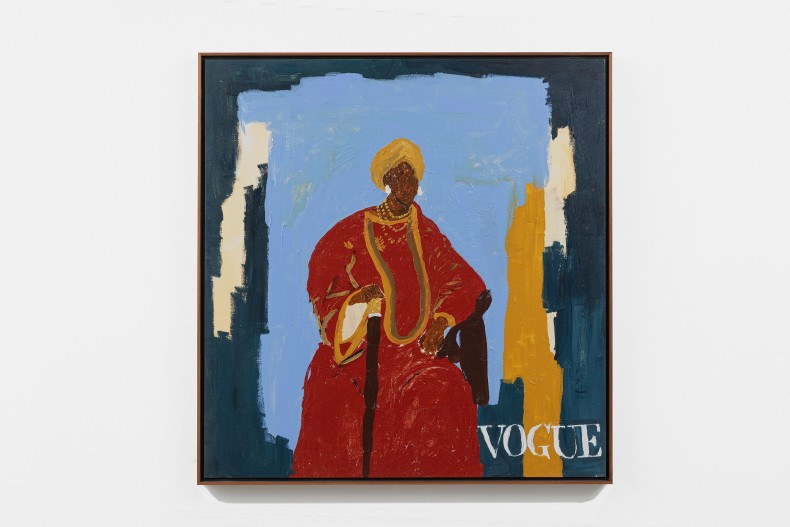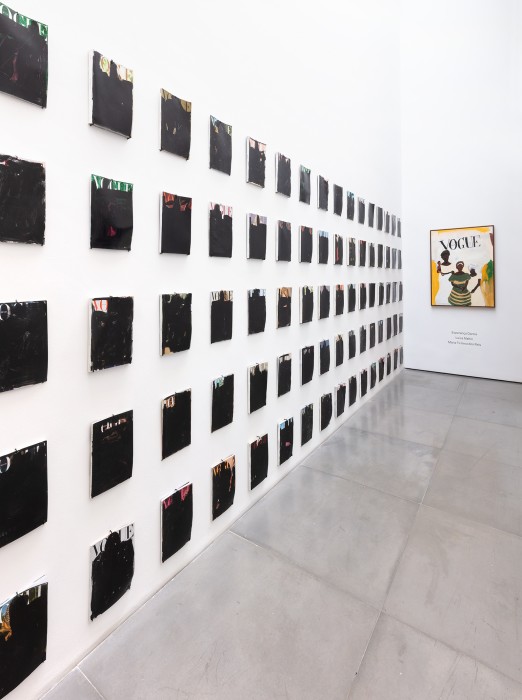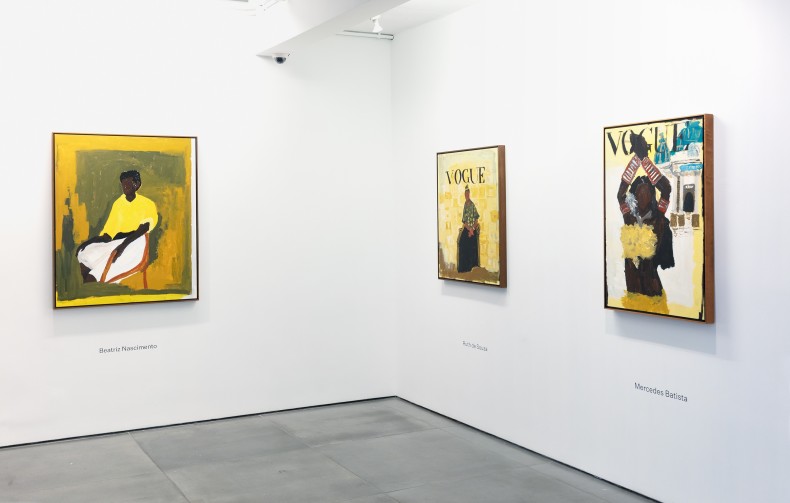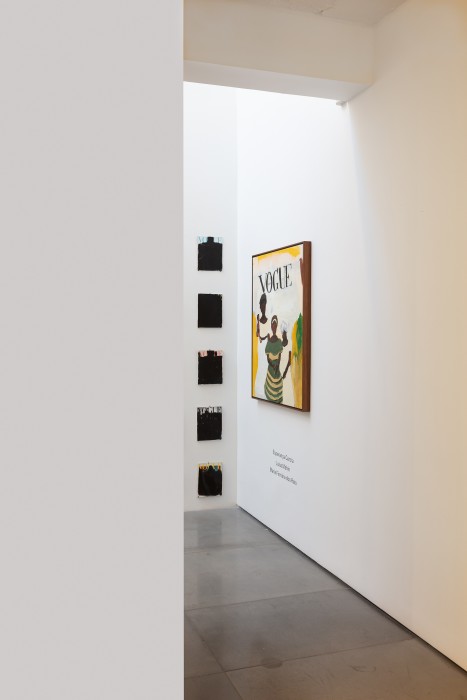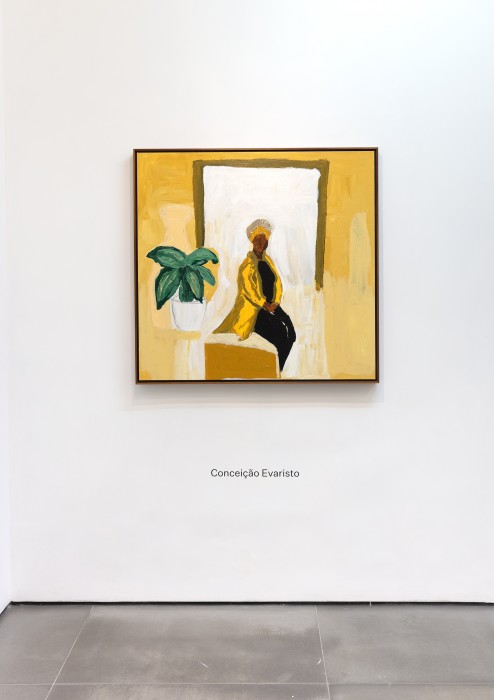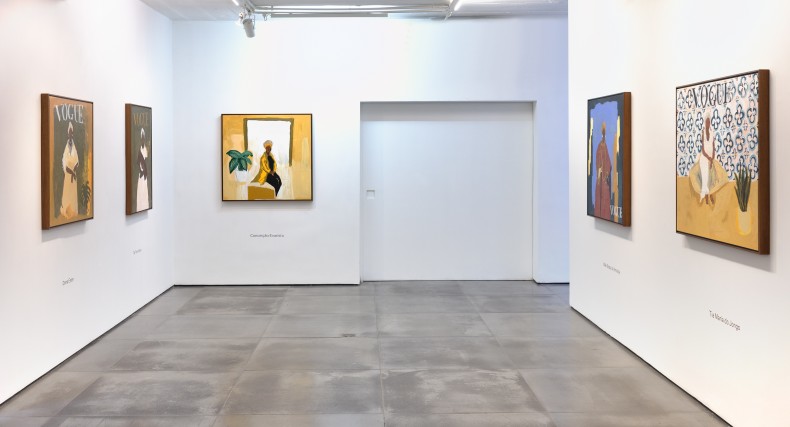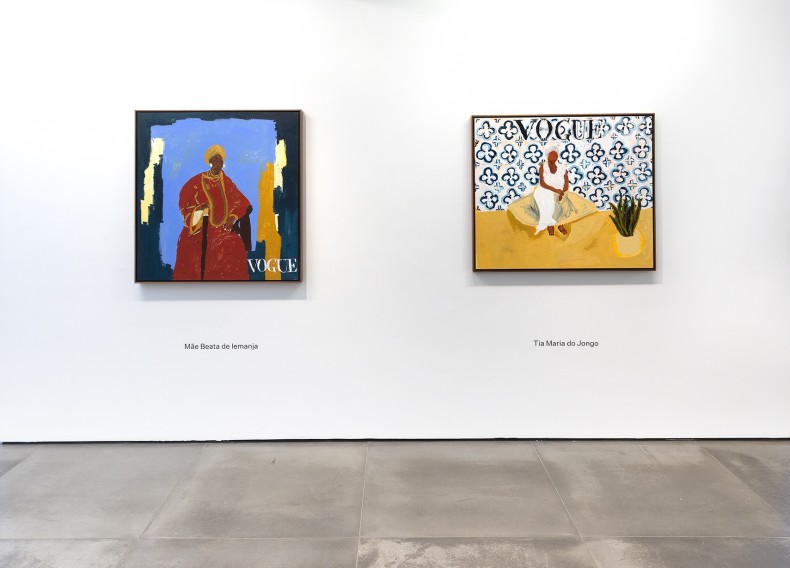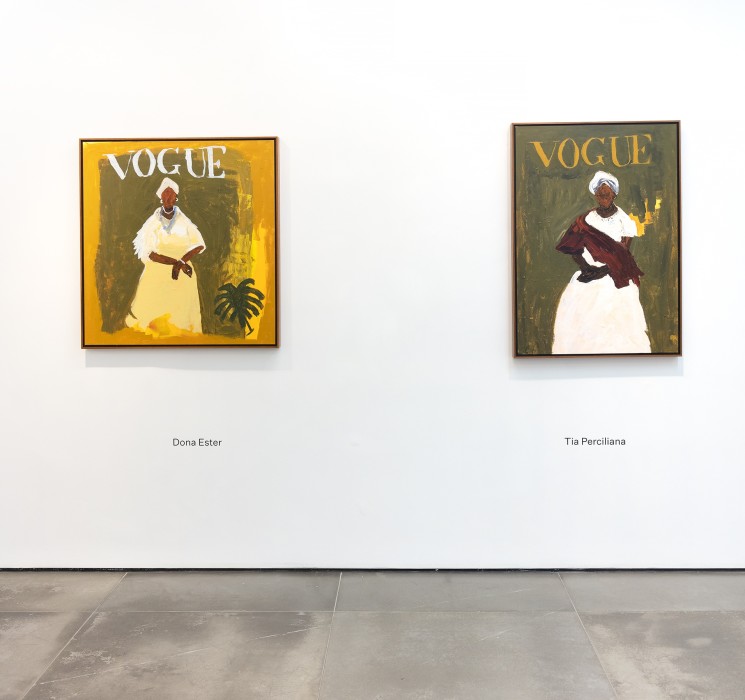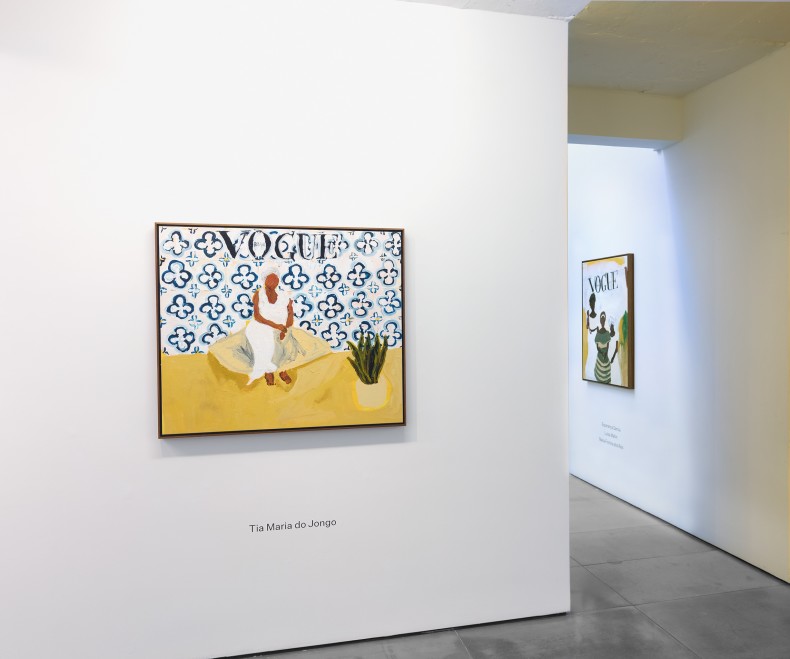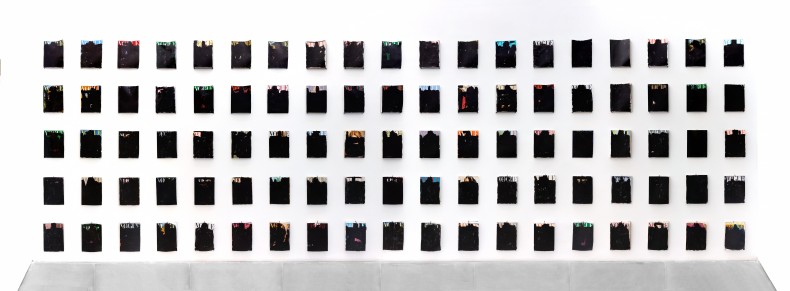Nara Roesler Rio de Janeiro is pleased to announce Before – now – what is yet to come*, Brazilian artist Elian Almeida's first solo exhibition, curated by Luis Pérez-Oramas. The presentation showcases the most recent developments in the artist's Vogue series, and will open on September 01, remaining on view through 23 October, 2021.
Elian Almeida was born in Rio de Janeiro, and raised in Baixada Fluminense; he later pursued studies in Visual Arts at the Rio de Janeiro State University (UERJ), subsequently studying Cinema and Audiovisuals at the Université Sorbonne Nouvelle – Paris 3. While experimenting with photography, video, and installation, Almeida's practice is mainly grounded in painting. His body of work addresses decolonialism, exploring the black body's experience and performativity in contemporary society and recuperating elements from the past such as images, narratives and characters, as a means of contributing to the dissemination and reassessment of black Brazilian History.
According to curator Luis Pérez-Oramas, 'Elian Almeida's work—and notably the Vogue series, which forms the main body of the exhibition—emphasizes the return of that which has been not only forgotten, but also concealed, through individual portraits: a painting that turns on what has been turned off, portrays what has been veiled.' The Vogue series, exhibited in Before – now – what is yet to come, portrays forgotten personalities through compositions that appropriate symbols of the iconic fashion magazine, reclaiming the visibility that it awards. As such, the work seeks to contribute to a process of historical reparation within a system of resistance, bringing individuals erased by official narratives to the forefront.
The exhibition presents sixteen portraits of black women, including that of notable individuals such as Conceição Evaristo—whose poetic verses constitute the title of the presentation—, as well as intellectuals such as Lélia Gonzalez. The artist does not only depict contemporary figures, but also delves into the past with representations of Esperança Garcia (18th century) and Luísa Mahin (19th century). In addition, the series includes portraits of Mercedes Baptista, the first black ballerina of São Paulo's Municipal Theater, of actress Ruth de Souza, and of Tia Maria do Jongo, along with other 'Mrs', 'mothers' and 'aunts' who contributed to the rise of Samba and to continuing the diasporic cultural developments of Rio de Janeiro.
In order to complement his painting's settings with accurate clothing and ornaments, Almeida studies the history of the figures he portrays, delving into archives and documents, in a process which he describes as an archaeology of memory. However, in excluding facial features, Almeida both denounces the erasure of these individuals from official narratives, and represents a collective body, or the possibility for a myriad of faces, pointing to all those who suffered and continue to suffer from the effects of structural racism. According to Pérez-Oramas, 'the portraits that Elian Almeida presents to us, are—strictly speaking—emerging funerary images, necro portraits: they look at us, without eyes, from within their concealment, and return to the melancholic certainty that what does not forget us, cannot fully return either, in the fullness of a presence that was amputated.'
Enciclopédia negra, a publication created with the intention of recovering Black historical figures, and spearheaded by Brazilian historian Lilia M. Schwarcz, Flávio Gomes and Jaime Lauriano, notably includes paintings from Almeida's Vogue series. The project invited thirty-six artists to depict the figures set forth in the publication; the works were subsequently illustrated in the volume and presented at the accompanying exhibition at Pinacoteca de São Paulo.
*the title of the exhibition was inspired by the poem I-Woman, written by Conceição Evaristo

